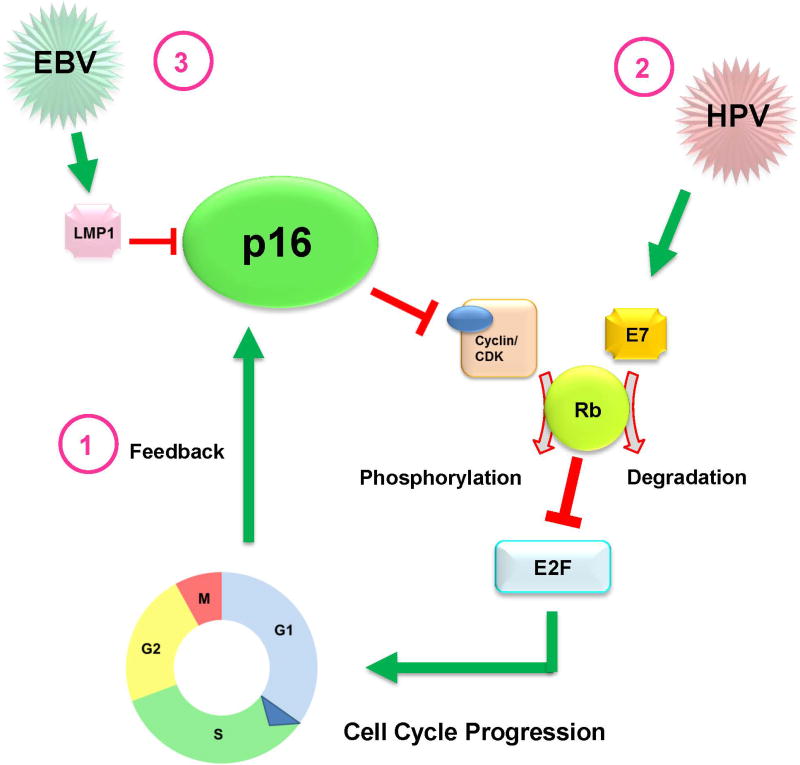Fig 2.
Schematic demonstrating possible molecular mechanisms involving p16 expression, Epstein-Barr virus (EBV) status, and human papillomavirus (HPV) status. 1) p16 is a tumor suppressor protein that inhibits cell cycle progression by preventing the formation of cyclin D/CDK complex, which is needed to phosphorylate retinoblastoma protein (Rb). Rb binds and prevents E2F from entering the nucleus to initiate cell cycle progression. (2) When cells are infected by HPV, the oncoprotein E7 binds to Rb, and signals it for degradation. As a result, E2F is released into the nucleus to initiate cell cycle progression. The uncontrolled cell proliferation initiates a negative feedback loop to signal p16 upregulation to counter this effect. (3) During EBV infection, this protective feedback mechanism can be disrupted by the oncoprotein latent membrane protein 1 (LMP1) by blocking the expression of p16.

